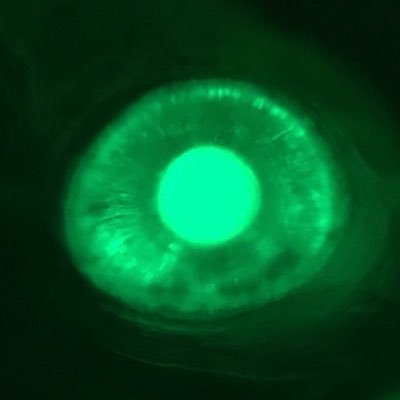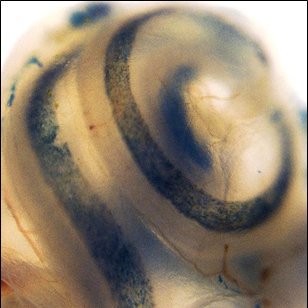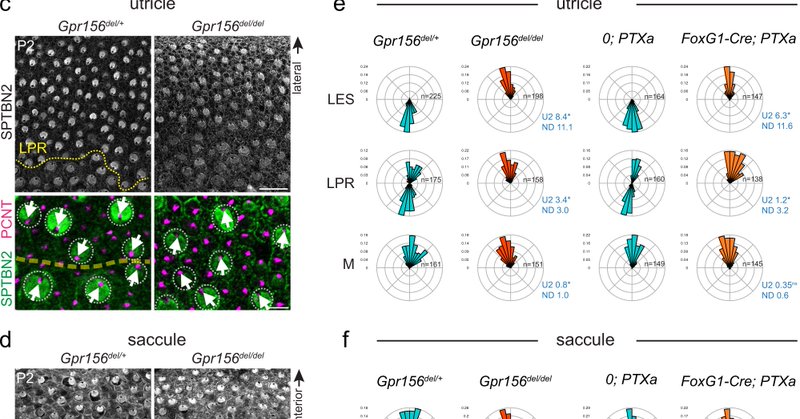
Katie kindt
@KT_Kindt
Followers
371
Following
76
Media
7
Statuses
55
Investigator @NIDCD @NIH. Sensory cell neurotransmission & imaging lab. Using zebrafish to visualize how hearing and balance works! All opinions are my own.
Bethesda, MD
Joined July 2018
Excited to share that my latest work in @kt_kindt ‘s lab studying the role of microtubules in ribbon synapse formation is out as a reviewed preprint in @elife. We performed live microscopy in zebrafish hair cells and observed some very interesting events! https://t.co/wQ2IsFVF79
1
6
11
It’s moments like this that I’m glad I run a lab :) go zebrafish!
0
1
8
Our latest preprint on how new synaptic vesicles reach ribbon synapses is out!
0
6
26
Very excited that our new preprint visualizing ribbon synapse formation is out!
biorxiv.org
Sensory cells in the retina and inner ear rely on specialized ribbon synapses for neurotransmission. Disruption of these synapses is linked to visual and auditory dysfunction, but it is unclear how...
0
7
23
To add new members sign in (after making an account) and add them. If you or someone else has an entry in Neurotree ( https://t.co/DAUFPN7K04) or other academic trees, you can fill this form ( https://t.co/jemrirBbw7) and we will cross-list your profile to danioTree.
docs.google.com
We have recently made an academic tree to preserve some of the history and scientific lineages of zebrafish researchers (https://academictree.org/danio). To add new members simply sign in (after...
0
2
0
Congrats to Keith Ameyaw (Weinstein lab) & Sandeep David (Kindt lab) for winning the Postbac/Undergrad Poster Prizes! #MARZ2023
0
4
12
Now online @JARO_News Dexamethasone is used to treat sudden hearing loss 💊 It is thought that maintaining high levels of dex in the ear may lead to better clinical outcomes 💉👂 But too much dex may not be a good thing for sensory hair cells😳 https://t.co/IMggNgG2RZ
link.springer.com
Journal of the Association for Research in Otolaryngology - The synthetic glucocorticoid dexamethasone is commonly used to treat inner ear disorders. Previous work in larval zebrafish has shown...
5
6
19
So glad to hang with like minded scientists at the Auditory GRC!
1
1
35
I love the postbac training program at the NIH! But it is always bittersweet when these trainees move on. Farewell Alma Jukic and best of luck in Med school!
0
0
20
Apply by May 16 to Biology of the Inner Ear Course. Tuition, room and board provided. Please RT. https://t.co/gJ9N5iglzh
0
12
18
Our new preprint it out! Work by grad student Daria Lukasz reveals how neurotransmission is a key part of what makes sensory hair cells so fragile https://t.co/CR7dXQCKFc
biorxiv.org
Sensory hair cells receive near constant stimulation by omnipresent auditory and vestibular stimuli. To detect and encode these stimuli, hair cells require steady ATP production, which can be...
1
5
35
YES! Apply to join us at BIE 2022! @KT_Kindt, @trapanilab & I will show you some of the amazing techniques we use in zebrafish to understand how hair cell organs develop, function, die, and regenerate 🐟👂😀
0
7
8
The NIDCD Division of Intramural Research invites outstanding scientists to apply for a tenure-track position to join an extraordinary team of researchers in communication disorders! Learn more about applying: https://t.co/zjHinqS4eD
#NIHjobs #NIDCDjobs
nidcd.nih.gov
0
7
9
Why I started my lab at the NIH- so many great collaborators-check out our preprint on photoreceptor cell fate. https://t.co/1wfmPn5PPm
@NEI @NIDCD
biorxiv.org
During development, retinal progenitors navigate a complex landscape of fate decisions that culminates with an array of unique cell types that are required for proper vision. Here, we aim to identify...
0
5
23
Excited to share our imaging study exploring patterns of spontaneous activity in the developing lateral-line system, now in preprint! https://t.co/uCVhv9rlYC
biorxiv.org
Hair cells are the sensory receptors in the auditory and vestibular systems of all vertebrates, and in the lateral-line system of aquatic vertebrates. During development, spontaneous activity in hair...
1
4
26
FDA Issues Landmark Proposal to Improve Access to Hearing Aid Technology for Millions of Americans https://t.co/Hb6GsgCFM2 Good news :)
0
0
6
Finally out! mouse @JAX + fish @NIDCD show that GPR156 plays a conserved role in reversing hair cell orientation https://t.co/IyEGdGN0iN
nature.com
Nature Communications - Sensory hair cells develop an asymmetric architecture to restrict stimulus detection to a single axis. Here the authors identify GPR156 as directing a 180-degree reversal in...
0
2
20












